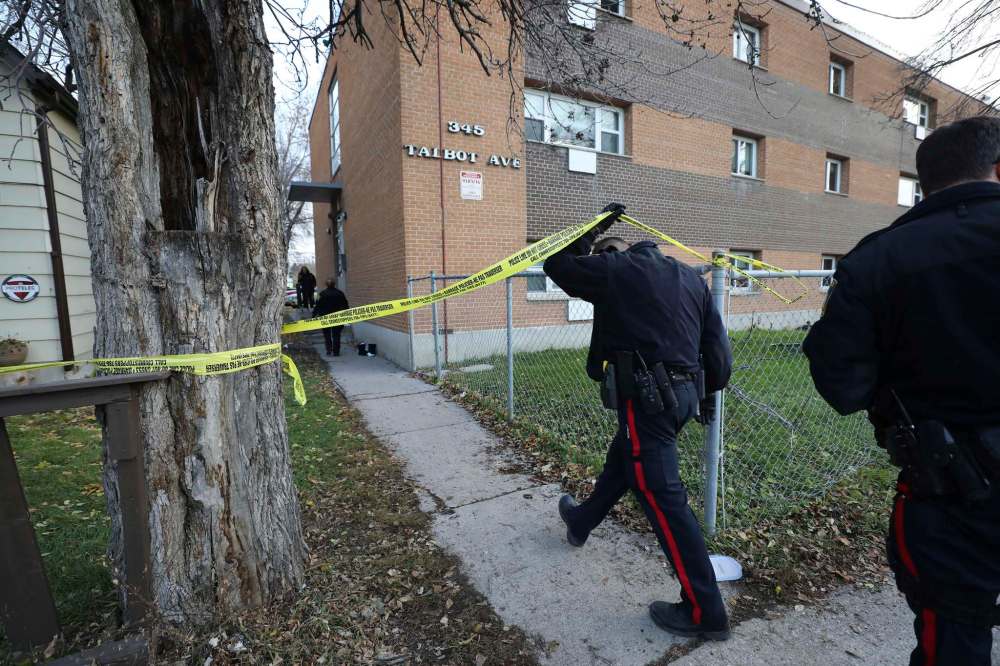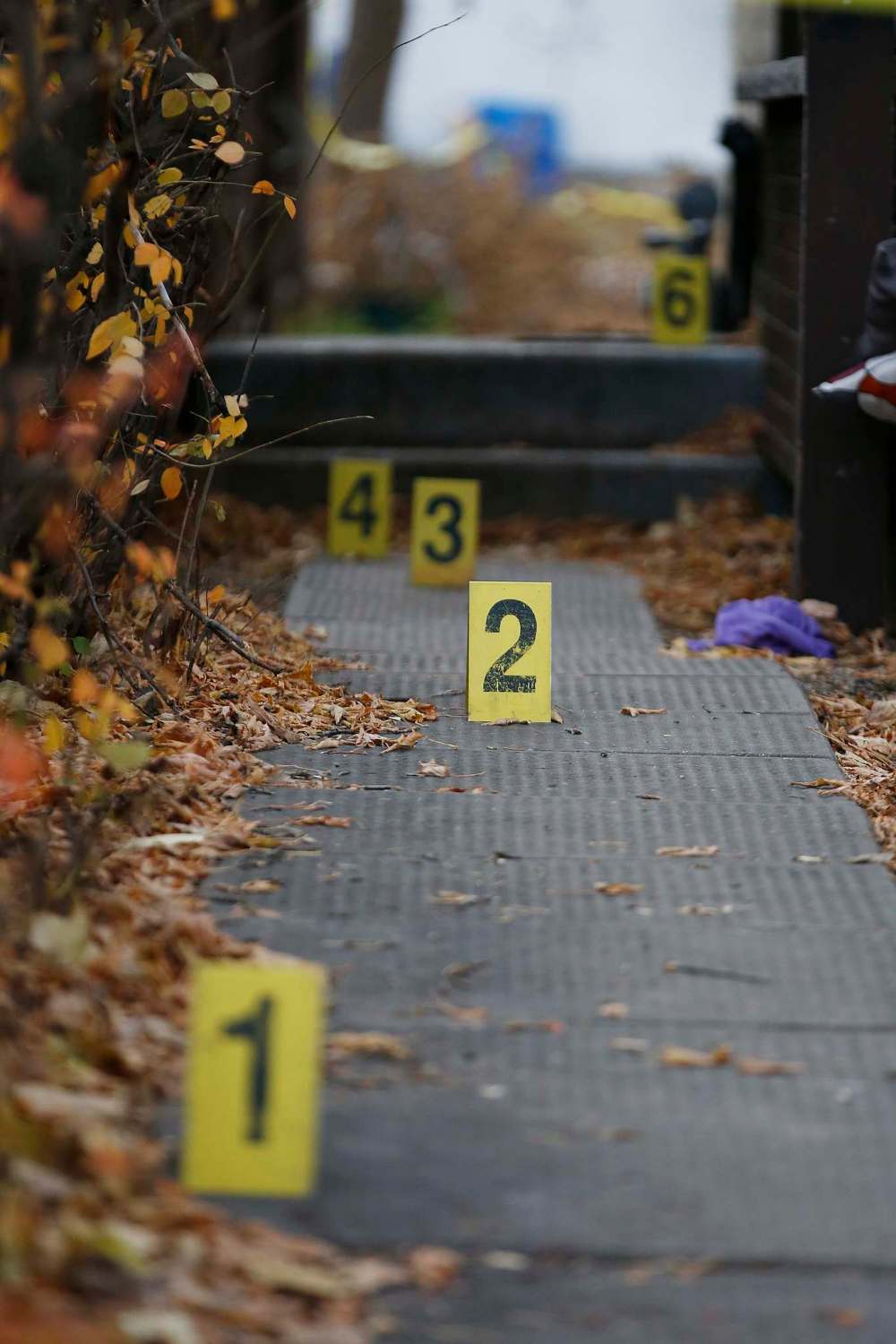Homicide spike alarming, but violent crime lower than it was 10, 20 years ago
Read this article for free:
or
Already have an account? Log in here »
To continue reading, please subscribe:
Monthly Digital Subscription
$0 for the first 4 weeks*
- Enjoy unlimited reading on winnipegfreepress.com
- Read the E-Edition, our digital replica newspaper
- Access News Break, our award-winning app
- Play interactive puzzles
*No charge for 4 weeks then price increases to the regular rate of $19.00 plus GST every four weeks. Offer available to new and qualified returning subscribers only. Cancel any time.
Monthly Digital Subscription
$4.75/week*
- Enjoy unlimited reading on winnipegfreepress.com
- Read the E-Edition, our digital replica newspaper
- Access News Break, our award-winning app
- Play interactive puzzles
*Billed as $19 plus GST every four weeks. Cancel any time.
To continue reading, please subscribe:
Add Free Press access to your Brandon Sun subscription for only an additional
$1 for the first 4 weeks*
*Your next subscription payment will increase by $1.00 and you will be charged $16.99 plus GST for four weeks. After four weeks, your payment will increase to $23.99 plus GST every four weeks.
Read unlimited articles for free today:
or
Already have an account? Log in here »
Hey there, time traveller!
This article was published 30/10/2019 (2237 days ago), so information in it may no longer be current.
Winnipeg may be in the throes of a violent-crime spree, including what could be a record-breaking year for homicides, but the number of serious violent crimes in the city has been on the decline over the past two decades.
According to Statistics Canada’s violent-crime severity index, serious violent crimes in Winnipeg were lower in 2018 than they were 10 and 20 years ago. That’s not to say violent crime in Winnipeg isn’t a huge problem — it is. Winnipeg continues to have the highest violent-crime rates among major Canadian cities.
But the numbers have been dropping over time, despite the latest flare-up.
Statistics Canada created “crime severity indexes” in 2004 as a way of more accurately reporting crime trends. The index puts greater weight on more serious offences and presents the data on a per capita basis. An increase in homicides, for example, would drive up the index higher than simple assaults would.

!function(e,i,n,s){var t=”InfogramEmbeds”,d=e.getElementsByTagName(“script”)[0];if(window[t]&&window[t].initialized)window[t].process&&window[t].process();else if(!e.getElementById(n)){var o=e.createElement(“script”);o.async=1,o.id=n,o.src=”https://e.infogram.com/js/dist/embed-loader-min.js”,d.parentNode.insertBefore(o,d)}}(document,0,”infogram-async”);
Winnipeg’s violent-crime severity index was 161.4 in 2018. It has grown every year since 2014, when it was at a low of 117.2. It’s a short-term trend Winnipeg Police Chief Danny Smyth has attributed in large part to the growing methamphetamine problem that has gripped Manitoba.
However, violent crime in Winnipeg is still lower today than it was in 2009 when the violent-crime severity index peaked at 191.2. It was also higher in 1998 at 174.5 (the earliest year the data is available).
To put it into context, Winnipeg’s violent-crime severity index in 2018 was lower than it was in 14 of the past 20 years. That may be cold comfort to crime victims and to police, who are battling the latest surge on the front lines, but the data does put current conditions into perspective.

Crime rates have been falling in Canada since the early 1990s, including in Manitoba. There have been some success stories in fighting crime in Winnipeg that haven’t gone unnoticed. The drop in the violent-crime severity index from 2009 to 2014 was significant.
The overall crime severity index (which measures both violent and non-violent crimes, including property crimes) has also been on the decline across Canada, including in Winnipeg, where it’s down from 160.2 in 1998 to 119.4 in 2018.
Even the number of homicides, which tend to get the most media attention (for good reason) hasn’t changed much in recent years, despite Winnipeg’s growing population. There are typically between 20 and 30 homicides a year in Winnipeg. It fluctuates; there are outlier years, such as 2011 when there were 41 — the highest on record. There have been 36 so far this year.
Hopefully it’s a blip that will return to average, or below average, next year. There is no rhyme or reason behind the fluctuations in the homicide rate. It could easily fall to less than 30 next year. There’s no evidence homicide is on the rise in the city.

Granted, crime data doesn’t tell the whole story. Police will tell you they’re seeing more weapons on the street than ever before. And the erratic, often violent behaviour associated with the proliferation of meth is new and troubling.
It calls for a more robust response from governments and social service agencies to deal with what appears to be a growing, or more severe, addiction problem in society. The courts may also need to do a better job of keeping chronic offenders behind bars for longer periods of time. There is no singular solution.
What the latest spate of violent crime shouldn’t do is cause knee-jerk reactions among policy-makers. Already we’re hearing calls from some to substantially beef up policing complements (which would be extremely expensive, especially for a city government that’s just starting to get its labour costs under control). However, there’s no evidence that putting more cops on the payroll has any impact on crime rates.
When violent crime in Winnipeg fell from its peak in 2009 to a low in 2014, the ratio of police per residents was largely unchanged from 1:501 to 1:496.
Winnipeg can’t ignore its violent-crime problem. Compared to the rest of Canada, it’s bad. But it’s important to keep current crime rates in context.
tom.brodbeck@freepress.mb.ca

Tom has been covering Manitoba politics since the early 1990s and joined the Winnipeg Free Press news team in 2019.
Our newsroom depends on a growing audience of readers to power our journalism. If you are not a paid reader, please consider becoming a subscriber.
Our newsroom depends on its audience of readers to power our journalism. Thank you for your support.











